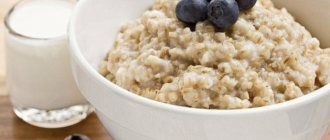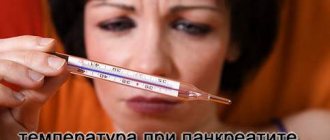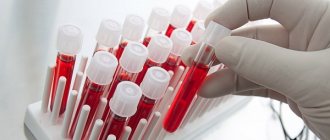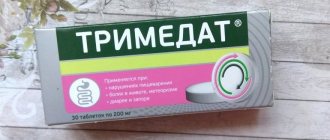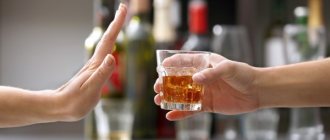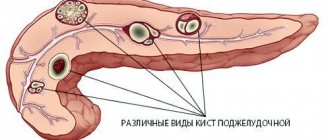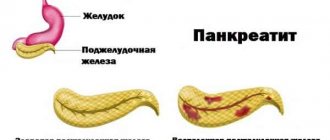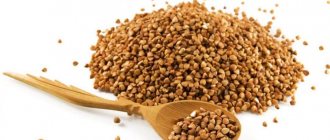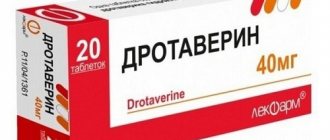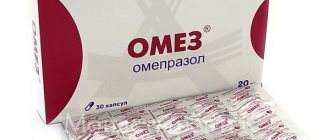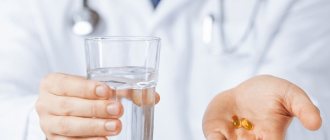Flatulence is an unpleasant human condition, accompanied by a filling of the abdomen with gases that are difficult or impossible to contain. This can happen anywhere and will cause discomfort and inconvenience to others.
The most “shameful” symptom of pancreatitis. By studying the causes and mechanism of occurrence, it is possible to explain flatulence during pancreatitis and its treatment.
Both healthy people and those suffering from pancreatic diseases suffer from abundant gas production. This can occur intermittently and depends on the food taken, at least for healthy people.
Legume products, cabbage, baked goods, and rye bread contain complex fiber, the breakdown of which causes fermentation and the accumulation of gases. But this is a temporary inconvenience that ends when the food is removed.
It is much worse if this condition is caused by one of the many ailments of the body that interfere with the digestion of food in the gastrointestinal tract. Such flatulence must be intensively combated. However, the formation of gases is an integral part of the functioning of the body.
With their certain volume, they help maintain tone and active intestinal motility. When there is an excess of them, it is necessary to look for the cause and eradicate its effect.
What is pancreatic flatulence?
What is flatulence? This is excessive gas formation that distends the abdominal cavity. If flatulence appears, this indicates a disruption of the gastrointestinal tract and a lack of pancreatic enzymes. Pieces of food are not completely digested, and such particles are at the mercy of bacteria, which begin to break them down. As a result, the concentration of gases gradually increases.
In small quantities they come out quickly through the anus. However, with pancreatitis, their volume increases to 20 liters per day. During the day they cannot come out naturally and the stomach becomes bloated. This causes severe attacks of pain that disappear after a bowel movement. Stress can further intensify the process of gas formation, provoking spasms of smooth muscles and preventing the release of accumulated gases.
Flatulence with pancreatitis is often caused by non-compliance with the diet. Especially when your diet contains foods that cause gas. Other reasons include a violation of the biological functions of the intestines, excessive accumulation of bacteria in it, poor circulation, the presence of tumors, and adhesions. Poisoning of the body, acute infectious diseases, and surgical operations can also cause increased gas formation.
Diagnosing flatulence
Diagnosis of this type of pathology involves the following procedures:
- contact examination of the patient;
- appointment of tests;
- Carrying out hardware diagnostics.
First examination of the patient
During the initial examination of an adult patient, the attending physician initially collects a detailed anamnesis, consisting of the patient’s complaints, information about the duration of symptomatic signs that occur, gastronomic preferences and preferences.
After which, palpation diagnostics of the entire abdominal cavity is carried out with palpation and tapping. With the development of flatulence, the patient’s abdomen becomes hard and begins to swell, and the area of intestinal obstruction is determined in the area where this bloating is localized. When you tap this zone, you hear a clear sound of emptiness.
Lab tests
Patients with suspected development of flatulence are prescribed blood tests for clinical and biochemical studies, as well as stool samples for scatological study of their physical and chemical properties.
With the development of flatulence, a clinical blood test gives results with an increased content of leukocytes and a decreased concentration of hemoglobin and red blood cells.
The results of a biochemical study indicate a reduced concentration of albumin components. The results of a scatological examination will show the presence of an inflammatory process, will allow a full assessment of the condition of the intestinal excretory system, and also detect, if present, helminth eggs.
Hardware diagnostics
To obtain a clearer diagnostic picture of pathological disorders in the patient’s body, the following additional diagnostic procedures are prescribed:
- X-ray studies that help visualize the general condition of the digestive tract;
- Ultrasound, with the help of which tumor-like neoplasms of various etiologies, cystic lesions, as well as pathological changes in the functionality of the vascular system are visualized;
- endoscopic diagnostics provides the opportunity to obtain material for biopsy and other additional diagnostic procedures
Signs of gas formation with pancreatitis
In 80 percent of cases with pancreatitis, flatulence, cramping pain, and nausea appear. Clinical characteristic symptoms:
- general malaise;
- stool disorder;
- muscle pain;
- vomit;
- rapid and difficult breathing;
- insomnia;
- chronic fatigue;
- frequent release of gases;
- headache;
- dry mouth;
- belching;
- decreased appetite;
- pain in the stomach;
- sleep disturbance;
- bloating, distension of the abdomen.
Irregular pain, abdominal cramps appear after smoked, spicy, fatty foods, or drinking alcohol. Discomfort and unpleasant sensations occur on the left and in the middle of the abdomen. Sometimes there is a burning sensation in the chest, disruption of the cardiovascular system.
Abdominal pain may be absent, but bloating and rumbling remain.
Physiotherapy of flatulence
If the patient does not experience an exacerbation, physical treatment based on:
- taking coniferous, salt-alkaline, carbon-mineral baths. The bath temperature should be around 36 degrees;
- Mud therapy improves blood circulation, relieves spasms, discomfort, and inflammation. It helps well with mild to moderate stages of the disease. For treatment, the mud should be heated to 36 degrees and applied to the lower back for 15 minutes;
- Electrophoresis with novocaine will help relieve pain, eliminate signs of flatulence, and increase pancreatic secretion;
- therapeutic exercises will help eliminate bloating and remove excess gases;
- If the disease is not in the acute stage, then to eliminate discomfort, a massage is often prescribed to help normalize the intestines.
Patients are advised to do gentle daily walking, its length is approximately 1 km. If the patient is having a hard time, then regular stops can be made.
Treatment of bloating with pancreatitis
Treatment of gas formation in pancreatitis is complex. Therapy is carried out continuously and is aimed at eliminating negative symptoms. The diet must be followed. Additionally, traditional medicine and physiotherapy are used.
Use of medications
Several medications are used at once. Can be assigned:
- Sorbents (“Activated carbon”, “Polysorb”). They are taken if the cause of gas formation is dysbacteriosis. Sorients neutralize toxins produced by pathogenic microflora.
- Enzymatic preparations (Festal, Mezim, Pancreatin, Pangrol, Creon, Pepsin, Panzinorm). They support the functioning of the pancreas, stimulate digestion, promoting better digestion of food.
- Anti-heartburn medications (Maalox, Gastal, Gaviscon). They are needed to eliminate heaviness in the stomach and burning sensation.
- Carminative drugs (“Bobotik”, “Sab-simplex”, “Espumizan”). They are based on simethicone, which suppresses the formation of gases, eliminating rumbling and bloating.
- Probiotics (“Bifiform”, “Linex”, “Hilak-forte”). They are required if the cause of flatulence is a violation of the intestinal microflora.
- Antispasmodics (“Trimedat”, “Duspatalin”, “Spazmolgon”, “No-Shpa”).
For constipation, laxatives are prescribed - Normaze, Duphalac. If a person suffers from diarrhea, then they drink Imodium.
Folk remedies
To treat increased gas formation, you can use folk remedies. They make decoctions and infusions from fennel, cumin, mint, coriander, and dill. Other recipes:
- Pumpkin juice. It is drunk in small portions throughout the day.
- An infusion of peppermint, calendula and medicinal chamomile. Take 1 tbsp. l. dried mixture, pour into a thermos, pour 500 ml of boiling water. Infuse the product for 12 hours. Drink in small portions throughout the day. But this remedy should not be taken by hypertensive patients and elderly people.
- Infusion of coltsfoot. Take 2 tbsp. l. dry plant, pour 250 ml of boiling water. Leave for an hour and strain. Drink on an empty stomach, 2 tbsp. l., half an hour before breakfast.
- St. John's wort infusion. Take 1 tbsp. l. plants and pour a glass of boiling water. Leave for 30 minutes. Then drink 500 ml 3 times a day. The product is prohibited for gastritis.
- Dill decoction. Take 10 g of seeds and pour 400 ml of boiling water. Leave the product for 45 minutes, strain. Drink three times a day, 70 ml. The course of treatment is a week.
Before using folk remedies, consult a doctor. Some herbs may be contraindicated or cause allergies.
Diet
For inflammation of the pancreas, therapeutic diet No. 5 is prescribed. It must be followed constantly. Fried, fatty, spicy and smoked foods are excluded. The amount of protein is reduced. It can provoke an exacerbation of the disease. Also removed from the diet:
- Food containing coarse fiber;
- fatty meat and fish;
- milk and milk-based products;
- nuts;
- cereals;
- seasonings and sauces (mayonnaise, ketchup, etc.);
- bread;
- legumes;
- sweet desserts;
- fresh fruits and vegetables;
- pickles;
- marinades;
- pickled, white, sea cabbage;
- conservation;
- baked goods;
- soda-containing products;
- mushrooms.
Not only products that cause gas formation are excluded, but also drinks that can provoke flatulence - soda, kvass, beer, champagne. Meals should be fractional - 5-6 times, in small portions. Food should be chewed well and not swallowed in chunks. Methods of food processing - boiling, stewing, baking, frying are excluded. Dishes should be semi-viscous and runny.
If gas formation is caused by stress, then heavy foods, coffee, strong tea, and energy drinks should be excluded from the menu. Replace them with natural fruit drinks, apple and pear compote. It is important to drink at least 2 liters of water per day. You need to give up chewing gum and alcohol. This also provokes excessive gas formation.
Attention! The daily dose of proteins, fats and carbohydrates should be 130/80/350 (in grams). Food can be seasoned with coriander, zaire, ginger, marjoram, and dill.
Physiotherapy
Physiotherapy helps to get rid of increased gas formation. Coniferous, carbon dioxide-mineral and salt-alkaline warm baths with a temperature of 36 degrees help well. Mud therapy is also used. Additionally it:
- relieves pain;
- improves blood circulation;
- eliminates inflammation;
- restores normal air concentration in the gastrointestinal tract and peritoneum;
- reduces smooth muscle tension.
To restore pancreatic secretory function, electrophoresis with novocaine is prescribed. You can also reduce gas formation with the help of therapeutic exercises.
Drug treatment
For increased gas formation in pancreatitis, drug treatment is often prescribed; the most effective drugs include:
- activated charcoal helps eliminate bloating during pancreatitis, usually take 2-3 tablets;
- Polyphepan, Smecta, Espumisan remove toxins and gases well;
- to relieve pain caused by intestinal gases, it is recommended to take Spazmalgon, No-shpa;
- collects gases and promotes their elimination White coal;
- in case of insufficient pancreatic secretion, the enzymes Mezim forte and Festal are prescribed;
- eliminates flatulence, gas formation, discomfort Disflatil;
- normalize intestinal function Linex, Bifidumbacterin, Lactobacterin;
- activates the function of beneficial bacteria Duphalac.
Usually, before prescribing treatment, the doctor prescribes diagnostics, which consists of: a blood test, stool for microflora, examination of gastric juice and bile.
Prevention
Lead a correct lifestyle. It is recommended to move more. This will help get rid of the increased accumulation of gases. For example, walk for an hour a day, go for short runs. You should give up bad habits (drinking alcohol, smoking).
It is important to eat right, buy only high-quality, natural products. As a preventive measure, it is recommended to avoid spicy, fatty and fried foods. It is important to get enough sleep (at least 8 hours), to provide the body with proper rest. Regularly see a gastroenterologist and treat stomach disorders immediately.
Flatulence with pancreatitis causes not only discomfort. Increased gas formation causes pain and disrupts the functioning of internal organs, especially the gastrointestinal tract. If you follow all the doctor's recommendations, you can deal with flatulence quickly.
